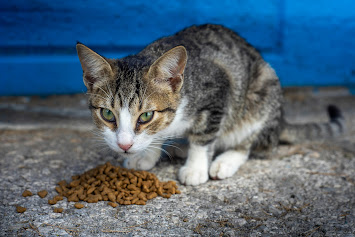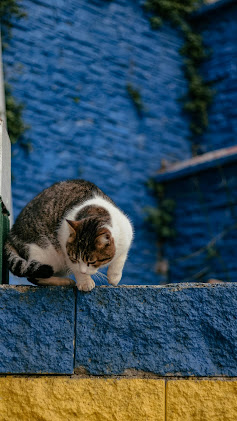The Comprehensive Guide to Selecting and Understanding Cat Pet Food for Optimal Feline Health and Nutrition
Introduction
Bringing a cat into your home is a delightful experience, but it also comes with a host of responsibilities, one of the most crucial being providing them with the right nutrition.
A well-balanced diet is essential for a cat's overall health, longevity, and happiness. However, with the plethora of options available in the market, choosing the best cat pet food can be a daunting task. In this comprehensive guide, we will delve deep into the world of cat nutrition, exploring their dietary requirements, the various types of cat pet food available, key ingredients to look for, special considerations based on age and health conditions, and tips for transitioning to a new diet. By the end of this guide, you will be equipped with the knowledge and understanding needed to make informed decisions about your feline friend's diet, ensuring they thrive on the best nutrition possible.
Understanding Your Cat's Nutritional Needs
Cats are obligate carnivores, meaning they require a diet primarily composed of animal-derived proteins to meet their nutritional needs. Unlike omnivores, such as dogs and humans, cats lack certain enzymes necessary for the digestion of plant-based proteins and nutrients. As such, their diet must consist predominantly of meat to ensure optimal health.
Protein: Protein is the foundation of a cat's diet and is essential for maintaining lean muscle mass, supporting growth and development, and providing energy. Look for cat pet foods that list high-quality animal protein sources, such as chicken, turkey, beef, or fish, as the first ingredient on the label.
Essential Amino Acids: Cats require specific amino acids, such as taurine and arginine, which are found primarily in animal proteins. Taurine, in particular, is crucial for maintaining heart health, vision, and reproductive function in cats. Ensure that the cat pet food you choose contains adequate levels of these essential amino acids to support your cat's overall well-being.
Fats and Fatty Acids: Fats are a concentrated source of energy and are essential for maintaining healthy skin and coat, as well as supporting various physiological functions. Omega-3 and Omega-6 fatty acids, found in fish oil, flaxseed, and other sources, play a crucial role in reducing inflammation, promoting skin health, and supporting cognitive function.
Vitamins and Minerals: Cats require a wide range of vitamins and minerals to support various bodily functions, including vitamin A for vision, vitamin D for calcium absorption, and calcium and phosphorus for bone health. Look for cat pet foods that are labeled as "complete and balanced," indicating that they contain all the essential vitamins and minerals in the right proportions to meet your cat's nutritional needs.
Types of Cat Pet Food
Cat pet food comes in various forms, each with its own set of benefits and considerations. Understanding the different types of cat pet food can help you make an informed decision based on your cat's preferences, lifestyle, and dietary requirements.
Dry Food (Kibble):
Dry cat food is the most common type of cat pet food and is available in a wide range of formulations to suit different life stages, dietary preferences, and health conditions.
Dry cat food is convenient, economical, and has a long shelf life, making it ideal for free-feeding or for cats who prefer to graze throughout the day.
Many dry cat foods are formulated to promote dental health by reducing plaque and tartar buildup, thanks to their crunchy texture.
Wet Food (Canned or Pouched):
Wet cat food is highly palatable and provides additional moisture, which is beneficial for cats who don't drink enough water or have urinary tract issues.
Wet cat food comes in various textures, including pate, chunks in gravy, or shredded, catering to different preferences.
Due to its high moisture content, wet cat food is less calorie-dense than dry food, making it a suitable option for cats who need to lose weight or maintain a healthy weight.
Raw Food:
Raw cat food is designed to mimic a cat's natural diet in the wild and typically consists of uncooked meat, bones, organs, and sometimes vegetables or supplements.
Proponents of raw feeding argue that it provides optimal nutrition, supports dental health, and can alleviate certain health issues, such as allergies or gastrointestinal problems.
However, raw feeding carries potential risks, including bacterial contamination (e.g., Salmonella or E. coli), imbalances in nutrients, and choking hazards from bones.
Prescription Diets:
Prescription diets are specially formulated by veterinarians to address specific health concerns or medical conditions, such as urinary tract issues, kidney disease, diabetes, or food allergies.
These diets may contain unique ingredients or nutrient profiles to support therapeutic goals and often require a prescription from a veterinarian.
If your cat has a medical condition that requires dietary management, consult with your veterinarian to determine the most appropriate prescription diet for your cat's needs.
Key Ingredients to Look For
When selecting cat pet food, it's essential to scrutinize the ingredients list to ensure that it meets your cat's nutritional requirements and preferences. Here are some key ingredients to look for when choosing cat pet food:
High-Quality Protein Sources:
Look for cat pet foods that list a named animal protein source, such as chicken, turkey, beef, or fish, as the first ingredient on the label.
High-quality protein sources provide essential amino acids, support muscle growth and maintenance, and are more digestible than plant-based proteins.
Essential Fatty Acids:
Omega-3 and Omega-6 fatty acids are essential for maintaining healthy skin and coat, reducing inflammation, and supporting cognitive function.
Sources of omega-3 fatty acids include fish oil, flaxseed, and algae, while sources of omega-6 fatty acids include poultry fat, sunflower oil, and corn oil.
Limited Fillers and Additives:
Avoid cat pet foods that contain excessive amounts of fillers, such as corn, wheat, or soy, which provide little nutritional value and may trigger food sensitivities or allergies in some cats.
Similarly, steer clear of artificial preservatives, colors, or flavors, as these additives may be unnecessary and could potentially harm your cat's health in the long run.
Taurine:
Taurine is an essential amino acid for cats that plays a critical role in maintaining heart health, vision, and reproductive function.
Ensure that the cat pet food you choose contains adequate levels of taurine, as deficiency can lead to serious health problems, including heart disease and blindness.
Other Beneficial Ingredients:
Look for additional beneficial ingredients, such as probiotics for digestive health, glucosamine and chondroitin for joint support, and antioxidants for immune function.
These ingredients can provide added nutritional benefits and support your cat's overall health and well-being.
Special Considerations
When selecting cat pet food, it's essential to take into account any special considerations based on your cat's age, life stage, health status, or dietary preferences. Here are some factors to consider:
Age:
Kittens, adult cats, and senior cats have different nutritional requirements, so choose cat pet food formulated specifically for your cat's life stage.
Kittens require higher levels of protein, fat, vitamins, and minerals to support growth and development, while senior cats may benefit from lower-calorie diets with added joint support and antioxidants.
Health Conditions:
If your cat has specific health concerns or medical conditions, such as urinary tract issues, kidney disease, diabetes, or food allergies, consult with your veterinarian for personalized dietary recommendations.
Prescription diets may be necessary to manage certain health conditions and may contain unique ingredients or nutrient profiles to support therapeutic goals.
Weight Management:
Overweight or obese cats are at increased risk of developing health problems, such as diabetes, arthritis, and heart disease.
If your cat needs to lose weight or maintain a healthy weight, choose cat pet foods that are lower in calories and fat, with controlled portion sizes to prevent overeating.
Food Allergies and Sensitivities:
Some cats may develop food allergies or sensitivities to certain ingredients, such as grains, dairy, or poultry.
If you suspect that your cat has a food allergy or sensitivity, consider switching to a limited ingredient diet or hypoallergenic formula that excludes common allergens and irritants.
Transitioning to a New Food
Cats can be notoriously picky eaters and may resist changes to their diet. However, it's essential to introduce new cat pet food gradually to minimize digestive upset and ensure a smooth transition. Here are some tips for transitioning to a new food:
Slow and Gradual Transition:
Start by mixing a small amount of the new cat pet food with your cat's current food, gradually increasing the proportion of the new food over the course of 7-10 days.
Monitor your cat's appetite, stool quality, and overall demeanor during the transition period to ensure they are adjusting well to the new diet.
Offer Variety and Choice:
Cats may have individual preferences when it comes to flavor, texture, and aroma, so offer a variety of cat pet foods to see what your cat enjoys the most.
Rotating between different flavors, brands, and types of cat pet food can also prevent boredom and ensure that your cat receives a balanced diet.
Patience and Persistence:
Be patient and persistent during the transition process, as it may take some time for your cat to adjust to the new food.
If your cat refuses to eat the new food or experiences persistent digestive upset, consult with your veterinarian for guidance and support.
Conclusion
Choosing the right cat pet food is a crucial decision that can significantly impact your feline companion's health, happiness, and quality of life. By understanding your cat's nutritional needs, selecting high-quality ingredients, considering any special considerations based on age and health conditions, and transitioning to a new food gradually, you can ensure that your cat receives the best nutrition possible. Remember to consult with your veterinarian for personalized dietary recommendations and guidance tailored to your cat's individual needs. With proper care and attention to their diet, your cat can thrive and enjoy a long, healthy, and fulfilling life by your side.











